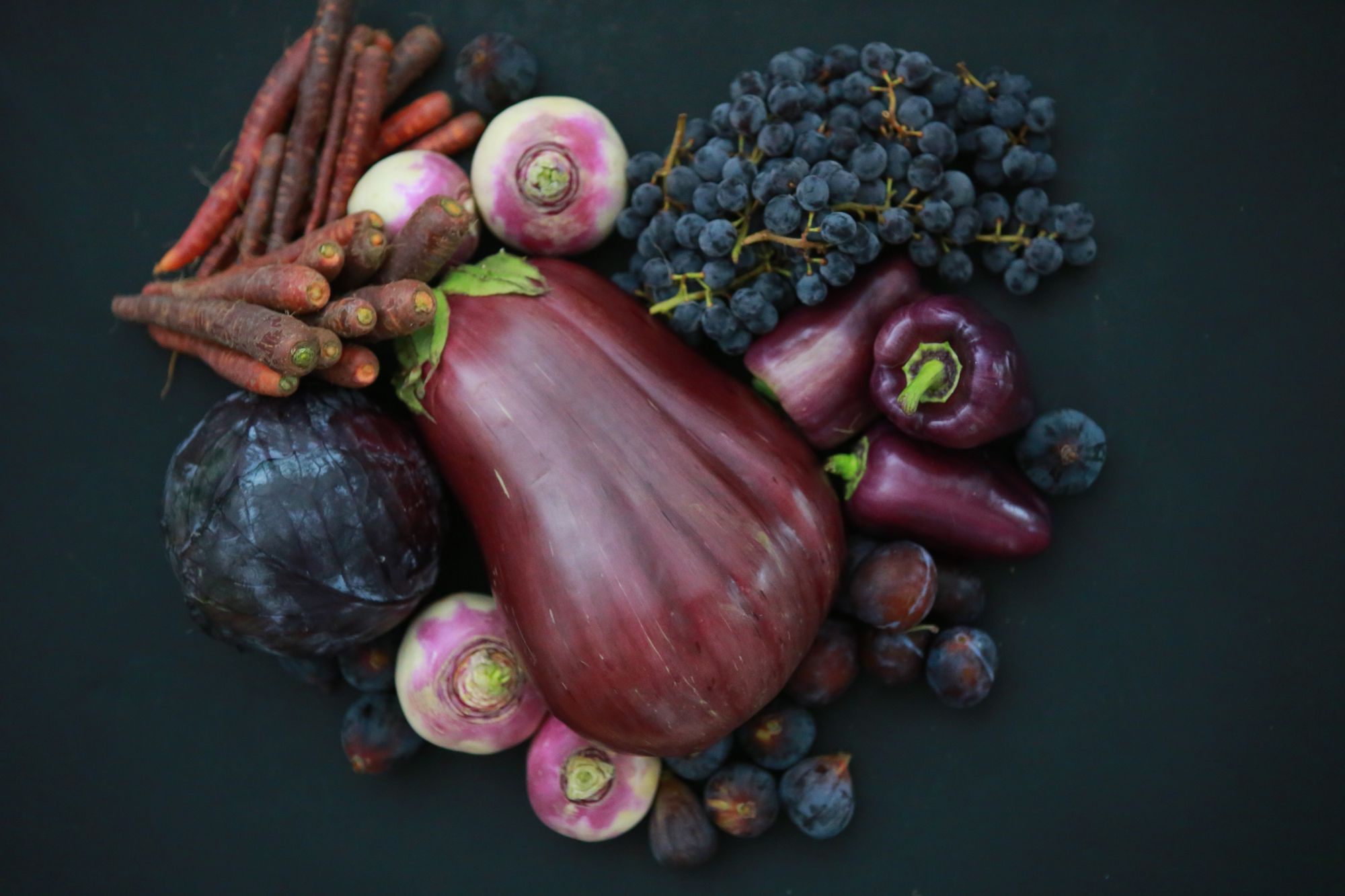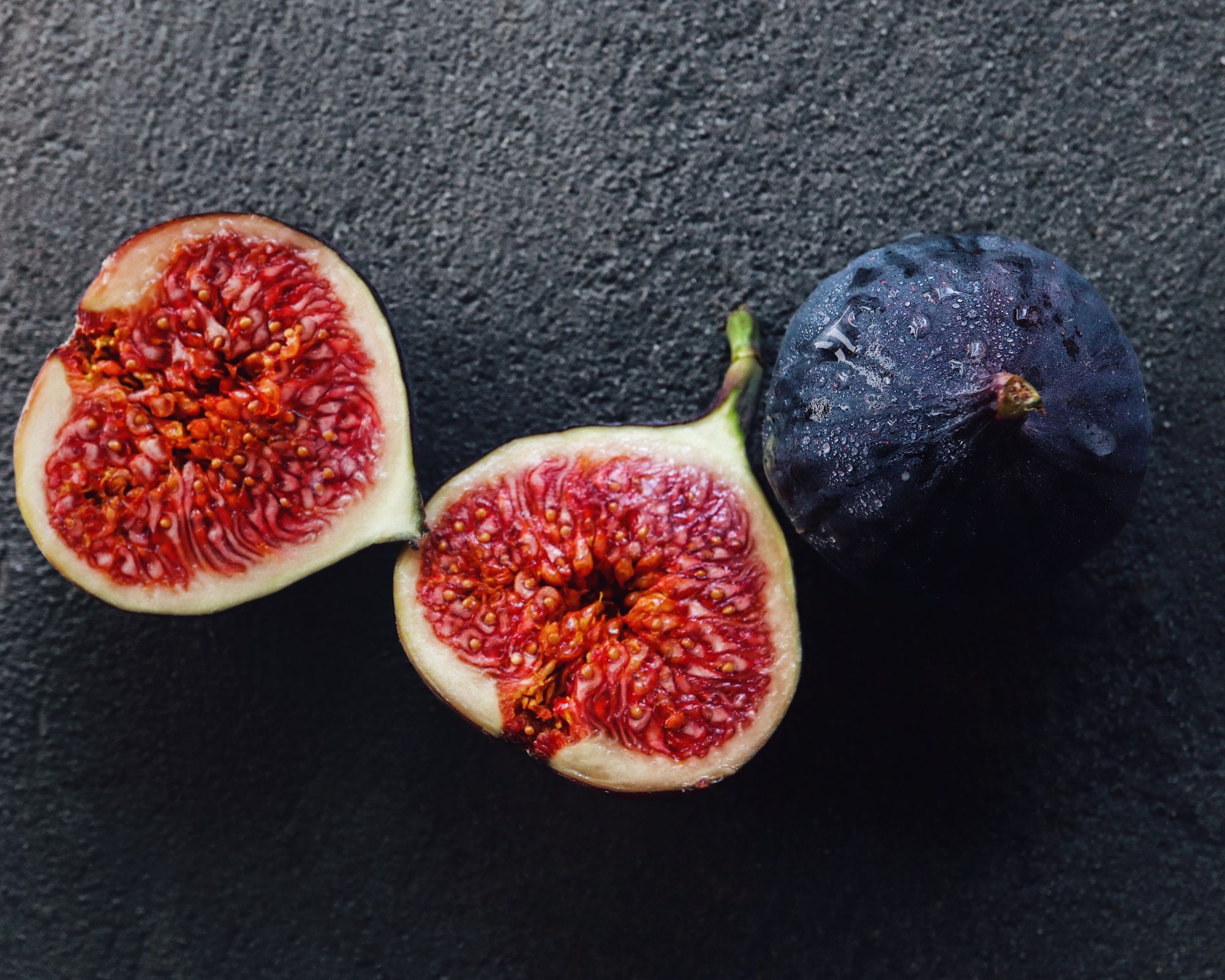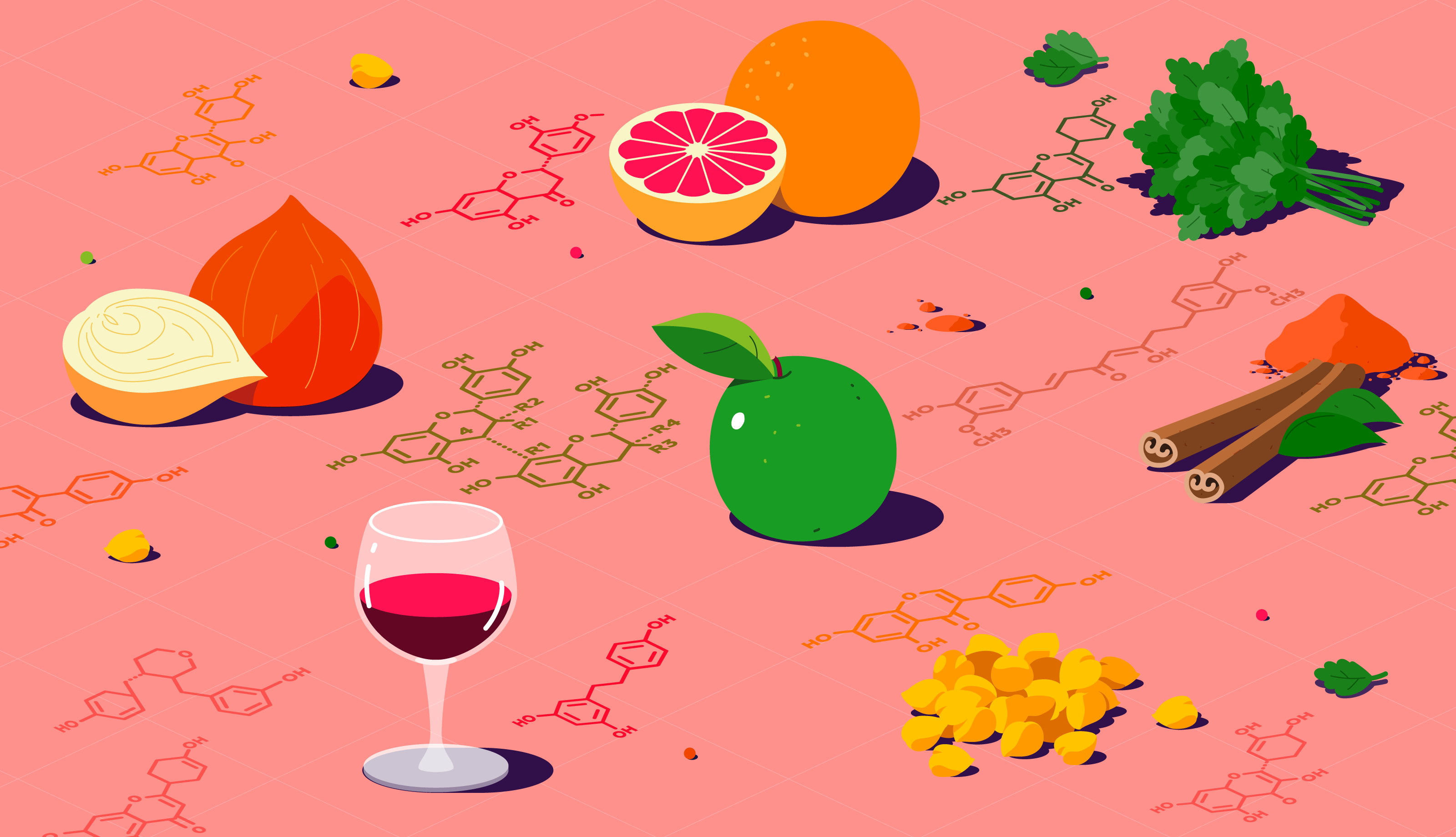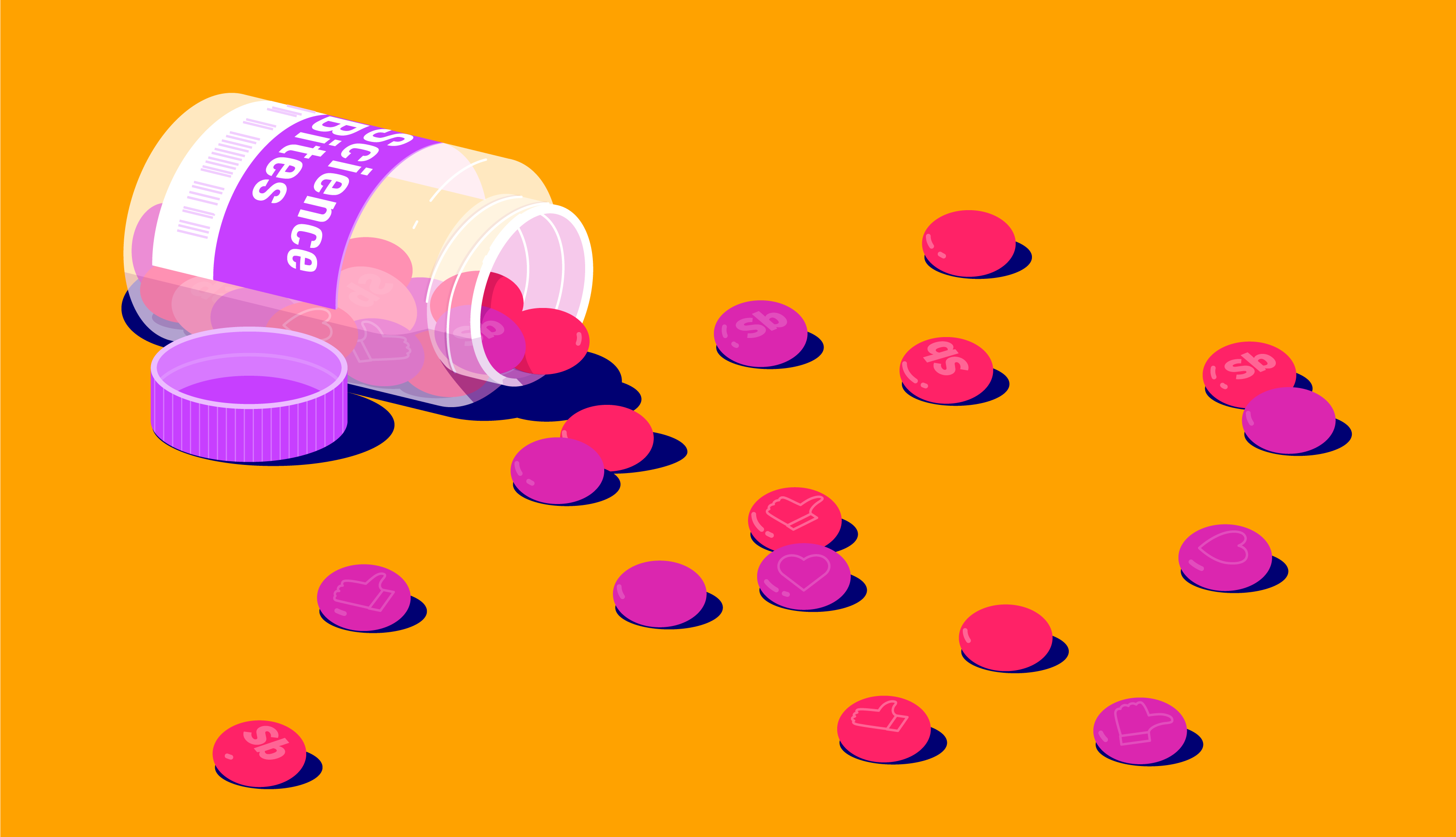If you want to support a good mood and healthy cognition, purple foods are the way to go. They have mental health benefits and it’s all because of the phytochemicals that naturally occur within them.
When it comes to food, you already know that plant-based foods are best. They’re full of naturally occurring chemicals that support your overall health by preventing chronic disease, strengthening the immune system, and maintaining normal bodily functions.
However, the Western diet can be a poor advocate of colourful fruit and veg. Instead, it tempts taste buds with beige, starchy foods, crammed full of fat and sugar. That’s where "Eat the Rainbow" comes in, a bit like a healthy food superhero!
☝TIP☝Track your rainbow foods intake with the Atlas App on iOS and Android if you've taken the Atlas Microbiome Test.
Table of contents
- 1. What is "Eat the Rainbow"?
- 2. Purple is for cognition and mood
- 3. Phytonutrients in purple foods
- 4. Purple vegetables and recipe ideas
- 5. Purple fruit and recipe ideas
These edible plants are pleasing on the eye and taste great too. And if that wasn’t enough, they have so many health benefits. Each one of the five colours in the spectrum is beneficial for different body systems. Today, it’s the turn of purple foods. Let’s look at what they’re good for and some delicious recipes for you to try at home.
What is "Eat the Rainbow"?
Ditch the beige, boring foods for dazzling, fresh edible plants. Their mouth-watering colours are telling you they’re good to eat, both for your taste buds and your health.
The concept of "Eat the Rainbow" is simple: eat a variety of colourful, natural foods for good health. There are five colours which are of great importance: red, orange, yellow, green, and purple. Each of these colours is associated with a variety of health benefits because of their naturally occurring chemicals.
The consumption of plant-based foods is a part of many dietary patterns, most notably the Mediterranean as well as vegetarian and vegan diets. Lots of research states that a good intake of fruits and vegetables is associated with a reduced risk of chronic disease.

The problem is, although most people know that eating fruit and veg is linked with better health outcomes, there is a consistently low intake. In the US, for example, only up to 12% of American adults eat the recommended amount.
The colourful substances found in plant foods are there for a variety of reasons. For example, some ward off insects and predators from eating them. Equally, the bright colours are also designed to attract pollinators, like bees, that spread their pollen and seeds to fertilise new plants.
The health benefits for human beings also come from these natural chemicals and have positive effects for cells and body systems, protecting organs from disease. Blue/purple foods are thought to benefit memory, mood, and cognition.
Purple is for cognition and mood
Purple foods contain polyphenols which are renowned for their benefits for mood and brain function.
Blue and purple plant foods are full of antioxidants, particularly those known to protect the brain and nervous system from oxidative stress and inflammation. Anthocyanins give these plants their blue-purple pigment and can cross the blood-brain barrier to apply their benefits on brain cells.
Blue foods are packed with nutrients that are known to improve cognitive health and mood, like anthocyanins, which are actually a type of flavonoid with potent antioxidant properties. There are many scrummy blue/purple fruits and vegetables that are good for brain health, like blueberries and purple kale.
Physiological effects of purple phytochemicals
- antioxidant properties
- cognitive support
- healthy mood
- role in nerve health
The brain is a key part of the central nervous system and maintains control over muscular activity, the activity of other organs in the body, and regulates sensory information. The organ is like the captain of your body and allows cells to communicate with each other by releasing neurotransmitters and hormones.
When it’s all working as it should, things are great. However, if brain health becomes impaired, then your moods can be imbalanced, your cognitive function may reduce, and you may experience memory problems. These are often associated with ageing too.
Oxidative stress and the brain
Oxidative stress occurs when the number of free radicals is larger than the number of antioxidants in the body. Free radicals are unpaired electrons, but electrons need to be paired - if not, they can cause harm.

Unpaired, they travel around the body looking for another lonely electron to pair up with. Ultimately, while they’re on their search, they are causing damage to other cells. This is called oxidative damage or stress. Antioxidants are cool because they can pair up with the free radicals and prevent the destruction.
Oxidative stress is associated with inflammation and many chronic diseases. It also plays an important role in the ageing process, and maybe even neurodegenerative conditions, like Alzheimer’s and Parkinson’s disease, as well as psychiatric disorders, including schizophrenia.
☝A diet rich in fruit and vegetables can have a protective effect against degenerative diseases, as well as promote better cognition and mood.☝
Phytonutrients in purple foods
The naturally occurring chemicals found in plant foods have many benefits for human health, and those in purple foods are no exception.
The phytonutrients present in purple foods are known to be helpful for both cognition and mood. Blueberries and grapes have been singled out for their beneficial phytonutrients, like anthocyanins, phenolic acid, and resveratrol.
Phytonutrients in purple foods
| anthocyanins | flavonoids |
| phenolic acids | proanthocyanidins |
| pterostilbene | resveratrol |
| anthocyanidins | stilbenes |
Berries, currants, and grapes have high anthocyanin contents. Anthocyanins can be red in acidic conditions or blue in alkaline conditions. These flavonoids are part of the polyphenol family and have strong anti-inflammatory activities.
Research shows that anthocyanin consumption is beneficial for human cognition in the long- and short-term. For example, a flavonoid-rich blueberry drink improved the recall of children aged 8-10 years old. After a single dose, there was a significant improvement in their recall of a previously learned of listed words.

These juicy berries could also improve adult cognition, not to mention the mood of children. This is yet another excellent example of how diet could be important in promoting positive mood and preventing conditions such as depression.
Another antioxidant found in purple foods, particularly purple grapes and blueberries, is resveratrol. This polyphenol could offer protection against many human diseases, including neurodegenerative ones that affect us in old age.
Resveratrol, found in large amounts in grapes, is one of the reasons red wine is now considered to be healthy (in moderate amounts). A study by Kennedy et al. (2010) showed that resveratrol increased cerebral blood flow in 22 healthy adults who were asked to carry out various cognitive tasks.
This is particularly important for ageing because blood flow in the brain may degrade as we age. This reduction in blood flow is linked to many age-related neurological disorders, like Alzheimer’s disease, vascular dementia, and stroke.
Purple vegetables and recipe ideas
Purple veg are everywhere. If you don’t believe us, check out this list. We’ve got some creative recipe ideas to prepare them too.
| aubergine | beetroot | plums |
| purple bell peppers | purple carrots | purple cauliflower |
| purple kale | purple potatoes | turnips |
Beetroot shouldn’t just be reserved for salads. Ditch the vacuum-packed, pickled beetroot and grab yourself some fresh ones to make Sri Lankan beetroot curry. And if you needed three reasons to make it: it’s vegan, spicy, and beautiful to behold!
And while you’re dreaming of spices, try pairing this curry with some carrot-and-paneer-stuffed paratha. These flatbreads are deceptively easy to make too! Just check out the video.
Aubergine (or eggplant, depending on who you ask) is amazing when you know what to do with it. Try this delicious middle-eastern eggplant dip called moutabal, with tahini, lemon, and some household spices. It’s a twist on baba ganoush with a little creaminess.
If you love a good helping of comfort food but with some added health benefits, then you need to try making purple cauliflower and truffle oil puree, topped with sauteed mushrooms.
Turnips are not everyone’s thing, but don’t be afraid to try something new. These parmesan-crusted crushed turnips make these traditional staples a little less boring and whole lot more appealing. You can also do something similar with purple potatoes: try making rosemary garlic crushed potato with lemon chive aioli.
Purple fruit and recipe ideas
There are many scrummy blue/purple fruits available packed with antioxidants.
| blackberries | blueberries | figs |
| prunes | purple grapes | raisins |
Blueberries are rich in anthocyanins and they’re great for boosting our mood, and these cute blueberry tarts will satisfy your craving for something sweet too. Use blueberries, or a mix of colourful berries, to make these no-cook, plant-based, fiber-rich blueberry tartlets.
Give your gut bacteria something to thrive on with this prebiotic purple madness, also known as fig energy balls with flaxseed. These little balls of energy taste great and are microbiome-friendly, what more could you ask for?
Get a healthy dose of probiotics, prebiotics, and deliciousness with this overnight oat and chia seed pudding topped with prunes and other sexy plants. Yes, who knew porridge could be sexy, but this tasty breakfast idea is a microbiome must!

If all of this is just too ostentatiously healthy for your dinner party guests, slip them some secret goodness with a fig and grape tart. You can stun your guests with this mouthwatering showstopper knowing there’s some super healthy phytonutrients navigating their way round their body.
If you’ve got a hankering for chocolate, you could opt for these egg-free, dark chocolate and prune brownies. The prunes add rich, decadent sweetness, and dark chocolate is also a prebiotic that nourishes your gut microbes!
- González, R et al. Effects of Flavonoids and Other Polyphenols on Inflammation, 2011
- Kennedy, D et al., Effects of resveratrol on cerebral blood flow variables and cognitive performance in humans: a double-blind, placebo-controlled, crossover investigation, 2010
- Khalid, S et al. Effects of Acute Blueberry Flavonoids on Mood in Children and Young Adults, 2017
- Kent. K et al. Food-Based Anthocyanin Intake and Cognitive Outcomes in Human Intervention Trials: A Systematic Review, 2017
- Khoo, H, E et al. Anthocyanidins and Anthocyanins: Colored Pigments as Food, Pharmaceutical Ingredients, and the Potential Health Benefits, 2017
- Minich, D, M. A Review of the Science of Colourful, Plant-Based Food and Practical Strategies for "Eating the Rainbow", 2019
- Salim, S. Oxidative Stress and the Central Nervous System, 2017
- Shah, S, A et al. Anthocyanins Abrogate Glutamate-Induced AMPK Activation, Oxidative Stress, Neuroinflammation, and Neurodegeneration in Postnatal Rat Brain, 2016
- Toda, N et al. Cerebral Blood Flow Regulation by Nitric Oxide: Recent Advances, 2009


















